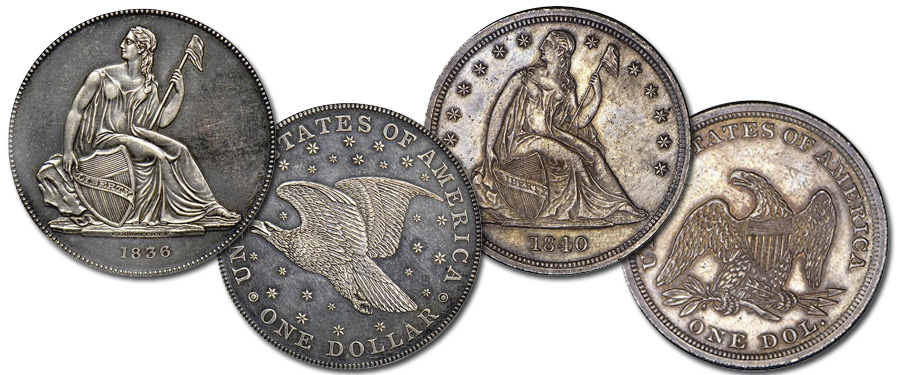
Question: I have always loved the Gobrecht dollars of 1836 – 1839 with the Flying Eagle reverse. Is there any reason why the silver dollars of 1840 (and later years) were struck with a different reverse?
Answer: What a great question, though the answer is perhaps a little mundane. After the limited success of the 1836-dated Gobrecht dollars in circulation – limited only by the number available – the push was on for a new silver dollar coin design. More Gobrecht dollars were struck — and restruck — in 1837 though none are known with that calendar date, and again in 1838 and 1839. By 1840 the desire for a circulating silver dollar was strong and Congress moved to pass legislation that would allow for the denomination. The Liberty Seated quarters of 1838-1840, and the Liberty Seated half dollars of 1839-1840 all had an eagle reverse that was similar and somewhat uniform across the two denominations. When the dollar became a member of the circulating coinage family in 1840 it was thought a new eagle would be better suited to the reverse, one that would be similar to the circulating quarters and half dollars of the era. As noted, the reverse with a perched eagle was adapted from Gobrecht’s motif used on quarters beginning in 1838 and half dollars in 1839 which in turn was taken from John Reich’s half dollar reverse design of 1807. Though many admired the Gobrecht dollar “flying eagle” reverse of 1836-1839, the dollars of 1840-1873 conformed to the design standards of silver coinage of the era.





